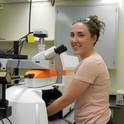
Other
Creating a Winogradsky Column: A Method to Enrich the Microbial Species in a Sediment Sample
(2019)
Abstract
The Winogradsky column is a miniature, enclosed ecosystem used for enriching sediment microbial communities, especially those involved in sulfur cycling. The column was first used by Sergei Winogradsky in the 1880s and has since been applied in the study of many diverse microorganisms involved in biogeochemistry, such as photosynthesizers, sulfur oxidizers, sulfate reducers, methanogens, iron oxidizers, nitrogen cyclers, and more (1,2).
The majority of microorganisms on Earth are considered unculturable, meaning that they cannot be isolated in a test tube or on a petri dish (3). This is due to many factors, including that microorganisms depend on others for certain metabolic products. The conditions in a Winogradsky column closely mimic a microorganism's natural habitat, including their interactions with other organisms, and allows for them to be grown in a lab. Therefor, this technique permits scientists to study these organisms and understand how they are important to Earth's biogeochemical cycles without having to grow them in isolation.
Disciplines
Publication Date
2019
Citation Information
JoVE Science Education Database. Microbiology. Creating a Winogradsky Column: A Method to Enrich the Microbial Species in a Sediment Sample. JoVE, Cambridge, MA, (2019).
